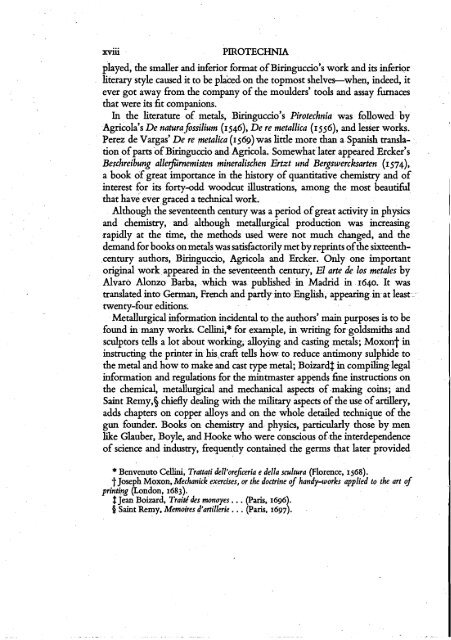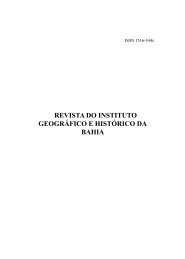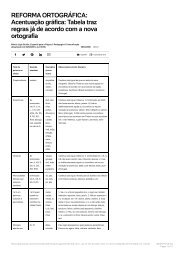Livro - Biringuccio - 09-1002-0
Artilharia os primórdios
Artilharia os primórdios
You also want an ePaper? Increase the reach of your titles
YUMPU automatically turns print PDFs into web optimized ePapers that Google loves.
aTiii<br />
PIROTECHNIA<br />
played, the smaller and inferior format of <strong>Biringuccio</strong>'s work and its inferior<br />
literary style caused it to be placed. on the topmost shelves--when, indeed, it<br />
ever got away fiom the company of the moulders' tools and assay haces<br />
that were its fit companions.<br />
In the literature of metals, <strong>Biringuccio</strong>'s Pirotechnia was followed by<br />
Agricola's De naturafossilium (1546), De re metallica (1556), and lesser works.<br />
Perez de Vargas' De re metalica (1569) was little more than a Spanish translation<br />
of parts of <strong>Biringuccio</strong> and Agricola. Somewhat later appeared Ercker's<br />
Beschreibung alle~rnemisten mineralischen Ertxt und Bergswercksarten (1574),<br />
a book of great importance in the history of quantitative chemistry and of<br />
interest for its forty-odd woodcut illustrations, among the most beautiful<br />
that have ever graced a technical work.<br />
Although the seventeenth century was a period of great activity in physics<br />
and chemistry, and although metallurgical production was increasing<br />
rapidly at the time, the methods used were not much changed, and the<br />
demand for books on metals was satisfactorily met by reprints of the sixteenthcentury<br />
authors, <strong>Biringuccio</strong>, Agricola and Ercker. Only one important<br />
original work appeared in the seventeenth century, El arte de 10s metales by<br />
Alvaro Alonzo Barba, which was published in Madrid in 1640. It was<br />
translated into German, French and partly into English, appearing in at least<br />
twenty-four editions.<br />
Metallurgical information incidental to the authors' main purposes is to be<br />
found in many works. Cellinit* for example, in writing for goldsmiths and<br />
sculptors tells a lot about working, alloying and casting metals; Moxont in<br />
instructing the printer in his,crafi tells how to reduce antimony sulphide to<br />
the metal and how to make and cast type metal; Boizardt in compiling legal<br />
information and regulations for the mintmaster appends fine instructions on<br />
the chemical, metallurgical and mechanical aspects of making coins; and<br />
Saint Remy,§ chiefly dealing with the military aspects of the use of artillery,<br />
adds chapters on copper alloys and on the whole detailed technique of the<br />
gun founder. Books on chemistry and physics, particularly those by men<br />
like Glauber, Boyle, and Hooke who were conscious of the interdependence<br />
of science and industry, frequently contained the germs that later provided<br />
,<br />
* Benvenuto Cellini, Trattati dell'orejiceria e della scultura (Florence, 1568).<br />
t Joseph Moxon, Mechanick exercises, or the doctrine of handy-works applied to the art of<br />
printing (London, 1683).<br />
$Jean Boizard, Traird des monoyes . . . (Paris, 1696).<br />
$ Saint Remy, Memoires d'artillerie . . . (Paris, 1697).




![[Cortar & Editat] Artigo - BOXER, C.R - Portuguese Roteiros, 1500-1700_removed](https://documents.yumpu.com/000/065/314/939/2e145b8f9d020cb1478f6bb669de4b853369b67c/6e4a3773446b6e5073444a31584c575877512f4453673d3d/79416d746a45764d6c746a757456566f3043414958413d3d.jpg?AWSAccessKeyId=AKIAICNEWSPSEKTJ5M3Q&Expires=1714413600&Signature=wMHqHZ%2F0hvjoMbXSRv%2FGJ1JNZ%2F8%3D)
![[Capa & Editar] Artigo - BARROS, Sigrid Porto de - A](https://documents.yumpu.com/000/063/816/786/af709ce29d1c721e5f74c145faeb760c1556c101/714f48715a616a2f324a556f537178394e6b4b4f54413d3d/45394b5a5354347734556b4a575634636c39565037413d3d.jpg?AWSAccessKeyId=AKIAICNEWSPSEKTJ5M3Q&Expires=1714413600&Signature=wpwFZrw4EKJA2HzhULYrSWe7N9o%3D)


